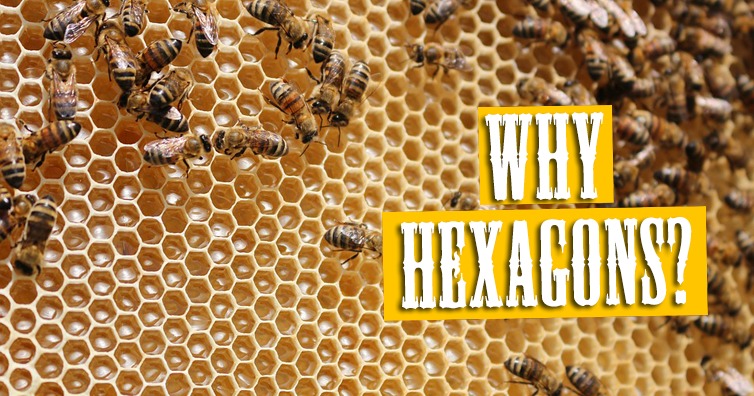It’s one of those things that we’ve all been wondering: what’s the deal with bees and hexagons? Well, wonder no more because a study published at the Orion Magazine finally sheds light of a question that has puzzled people and scientists for centuries.
Here’s how it goes.
As we all know, honeycombs store honey which is very valuable to the bees as it sustains the hive and feeds their young but also makes the wax the actually holds the honeycomb together. To produce it, bees have to go through a long process and therefore it’s obvious that they need to build a secure storage with as little effort as possible. This means that all the cells should be exactly the same so they fit tight with every other cell. A honeycomb built from spheres, pentagons, octagons etc, wouldn’t be ideal because it will create gaps that will need extra wax for patching. Of course, the same perfect structure can be made possible not just from hexagons, but also from two other geometrical figures with equal sides: squares and equilateral triangles. So why do bees also use hexagons? Here is where it gets very fascinating. (the article continues after the ad)
The idea was first proposed in 36 B.C by Roman scholar Marcus Terentius Varro but it was proven mathematically 2,000 years later by Thomas Hales, a mathematician at the University of Michigan. As it turns out, a hexagonal honeycomb has the smallest total perimeter and therefore it needs less wax to be built and is a more compact structure.
If you think about it, compactness matters and it makes absolute sense. To produce a single ounce (28 gr) of wax, a bee must consume eight ounces (226 gr) of honey. Hexagons are the perfect design in economizing labor and wax and that’s why bees always use hexagons to make their beehives.
If you like what you read, then you will definitely love this one: This Is Why Honey Is The Only Food That Doesn’t Spoil
Photo: Ravilbaptist / Pixabay
Photoshop: I’m A Useless Info Junkie
Sources: What Is It About Bees And Hexagons?



